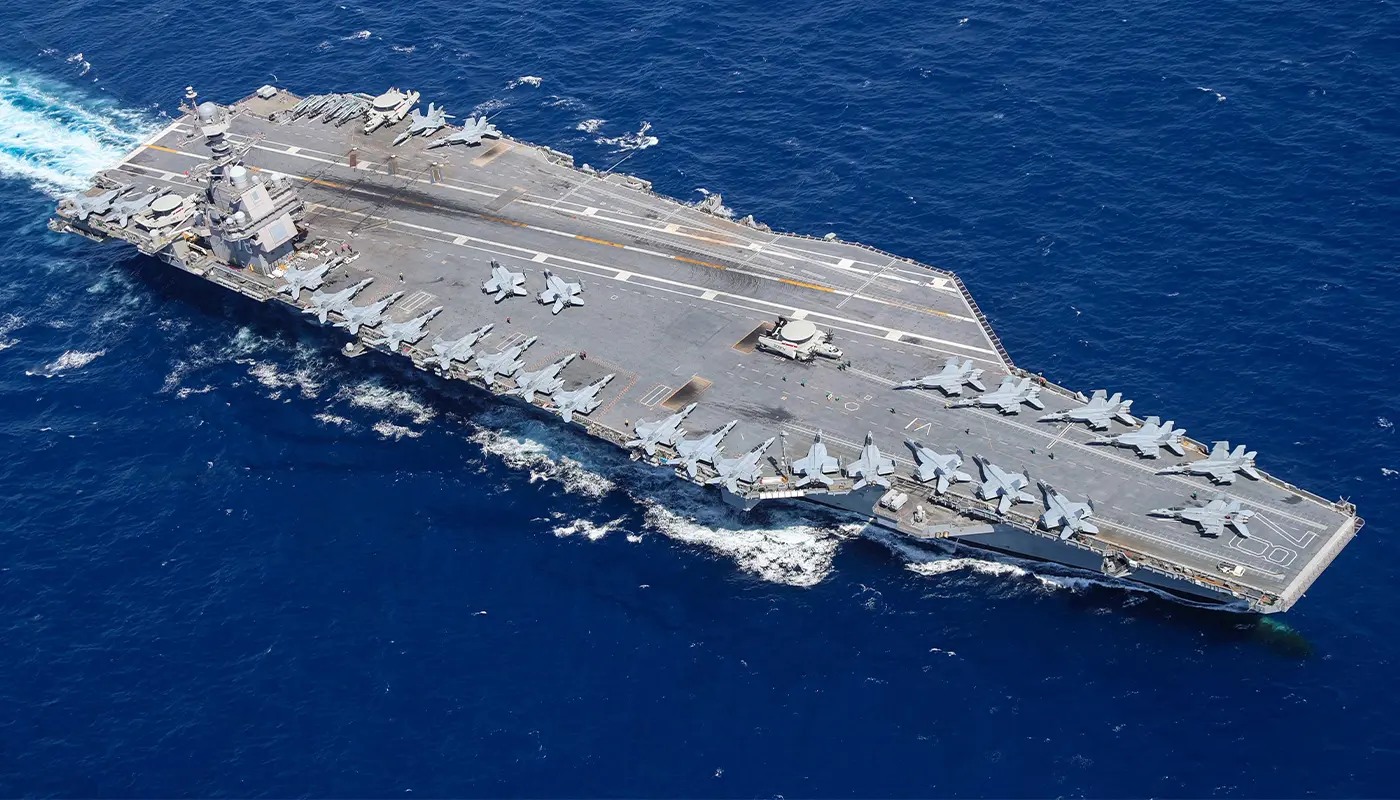The United States has announced the deployment of its most advanced aircraft carrier strike group to the waters off South America, marking a significant acceleration of military activity near Venezuela and stirring concerns of possible regime-change intentions.
According to the USS Gerald R. Ford Carrier Strike Group, which includes the world’s largest aircraft carrier, the move has been ordered to join the United States Southern Command (SOUTHCOM) area of responsibility, which covers much of the Caribbean Sea and northern South America.
The deployment was announced publicly on 24 October 2025 by Pentagon spokesman Sean Parnell, who said the operation was designed to “bolster U.S. capacity to detect, monitor, and disrupt illicit actors and activities that compromise the safety and prosperity of the United States.”
Officials pointed to a series of recent strikes by U.S. forces on vessels alleged to be involved in trafficking, including one claimed to have killed six people and bringing the death toll since September to at least 43. The administration labelled such criminal organisations as “narco-terrorists” and compares the campaign to counter-terror operations.
While the official rationale emphasises anti-narcotics and disruption of transnational criminal organisations, analysts and regional actors interpret the deployment as possibly signalling a broader strategic aim. In the words of Elizabeth Dickinson of the International Crisis Group: “Drugs are the excuse. And everyone knows that.”
The presence of advanced firepower, including fighter jets and surveillance aircraft attached to the carrier group, raises questions about whether land-based targets in Venezuela could be on the table.
In Caracas, President Nicolás Maduro condemned the move, accusing the United States of “fabricating a war” against his country and preparing covert operations. He stated: “They are fabricating a new eternal war … we are going to prevent it.” His defence minister, Vladimir Padrino López, announced that military coastal-defence exercises had been underway to counter any attempt at destabilisation.
The regional context adds further complexity. A U.S. warship, USS Gravely, recently docked in Port-of-Spain, Trinidad and Tobago, in a development described by regional media as part of mounting military pressure on Venezuela. Some Caribbean officials welcomed the presence as supporting counter-crime efforts; however, others warned it may provoke instability across the region.
In the U.S. Congress, lawmakers from both parties have raised concerns about the legality and scope of the operations. The absence of a formal declaration of war or clear congressional authorisation has prompted debate over whether the strikes constitute extrajudicial actions or could slide into a broader ground campaign.
The rapid timing of the deployment, the scale of the assets involved and the heightened rhetoric of “narco-terrorism” have generated speculation that the U.S. may be signalling readiness to intervene more directly in external state affairs, particularly if governments are perceived as complicit or weak in confronting transnational criminal networks.
For Venezuela and neighbouring countries, the shift introduces new uncertainty. Caracas has already mobilised its forces and is visibly preparing for heightened confrontation. Meanwhile, regional neighbours are watching closely, aware that any escalation could have broader political, humanitarian and security ramifications.
As the carrier strike group heads toward the Caribbean basin and possibly approaches the Venezuelan coast, the optics of the deployment may prove as consequential as the operational details. What remains unclear is whether the U.S. intends solely a maritime interdiction campaign or is laying groundwork for a potential land or aerial operation should the circumstances evolve.
Sources:
Al Jazeera, AntiWar, Associated Press, Newsweek




